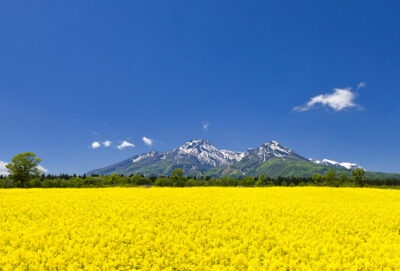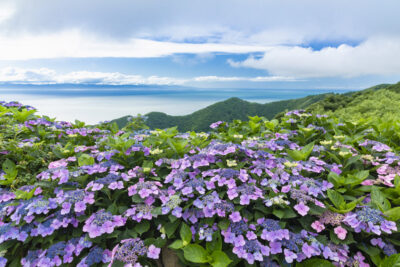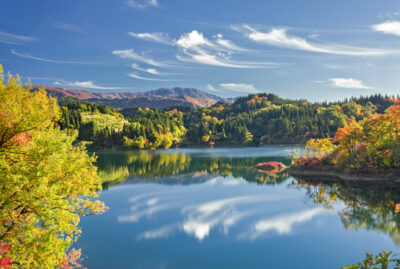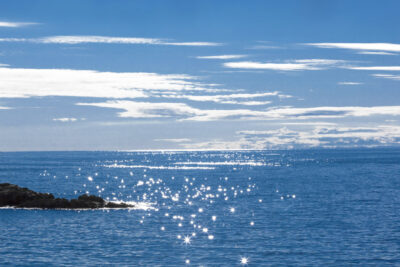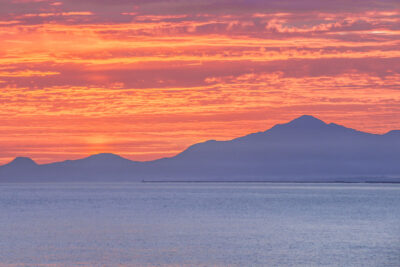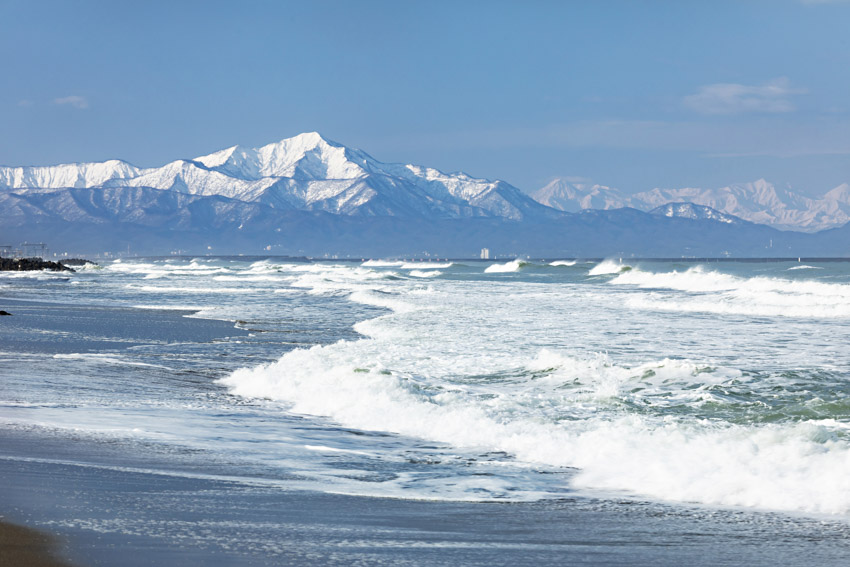
どの方向から見ても、三角錐の美しい山容を持つ米山ですが、特に柏崎の海岸や上越市柿崎区の平野部、そして田圃や数十メートルほどの低い山々の間から垣間見える吉川区の里山からの眺めが素晴らしいです。一方、柏崎市内の平野部は建造物が多く、また内陸に入ると丘陵地が視界を遮るため、山頂部分しか見えないのが残念です。
米山を望む風景は一見地味に感じられるかもしれませんが、写真や絵画の基本的な練習コースと言えるほど、多彩な構図を楽しむことができます。風景エコシステムと言っても過言ではない地域だと思います。また、米山は利尻富士・近江富士・讃岐富士と同じく「越後富士」とも呼ばれています。晴れた早朝に米山に登り、柿崎方面を見下ろすと、三角形の影が田んぼに映る「影米山」を見ることができます。これは本家・富士山の「影富士」にも劣らない、独立峰ならではの光景です。
From any direction, Yoneyama boasts the beautiful silhouette of a triangular cone, but the views from the coast of Kashiwazaki, the plains of Kakzakii-ku in Joetsu City, and the rural mountains of Yoshikawa-ku, visible between rice fields and low mountains of about 30 meters, are particularly stunning. On the other hand, the plains of Kashiwazaki City are densely populated with buildings, and as you move inland, hills block the view, making it regrettable that only the summit is visible.
While the scenery of Mount Yoneyama may seem rather plain at first glance, it offers a diverse range of compositions that could serve as a basic training course for photography or painting. This region could be called a landscape ecosystem. Additionally, Mount Yone is also known as “Echigo Fuji,” alongside Mount Rishiri Fuji, Mount Omi Fuji, and Mount Sanuki Fuji. On a clear early morning, climbing Mount Yone and looking down toward the Kakizaki area reveals the “Shadow Mount Yoneyama,” where the triangular shadow of the mountain is cast onto the rice fields. This is a unique sight, comparable to the “Shadow Fuji” of Mount Fuji itself, characteristic of an isolated peak.
EOS5DMarkⅣ 130mm 1/60秒 f:13
©️photo by Nakamura Osamu

